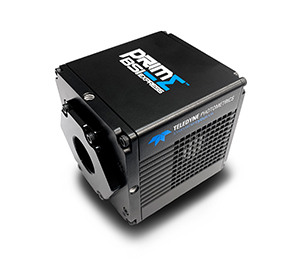Dr. Daniel Hillier and Mr Abel Petik
Visual Systems Neuroscience Lab, Research Centre for Natural Sciences, Budapest, Hungary
Background
The lab of Dr. Daniel Hillier focuses on vision science and researching how vision works, using increasingly more complex model organisms and neuroscientific research methods. Organisms are stimulated with different visual stimuli and readings are taken from the primary visual cortex, in order to discover how these circuits link up, how visual information is processed, and how these systems are affected during visual impairment such as blindness.
The lab uses imaging techniques such as optogenetics, intrinsic signal imaging and fluorescence, in order to take physiological readings, target different cell types, and build cortical maps.

Challenge
Research scientist Abel Petik performs both intrinsic signal imaging as well as fluorescence on a single imaging system, meaning a flexible camera solution is necessary. The system is a low-magnification macroscope for observing a large field of view with fluorescence widefield imaging. This is due to larger model organisms being used, such as cats and primates, meaning imaging methods are less established than rodents, and much larger brain diameters are being imaged, such as 10 mm.
While intrinsic signal imaging is slow (scale of seconds), being able to image at high speeds is still advantageous as more images can be acquired and then averaged to increase the signal-to-noise ratio. As stated by Dr. Hillier: “For intrinsic signal imaging the most important factor is the well depth of each camera pixel, but with fluorescence imaging the quantum efficiency and dark noise are important, meaning the ideal camera needs to have flexibility across a wide range of experiments.”
“We expected the fluorescence to be very weak in our experiments, but the Prime BSI [Express] is the best on market in terms of signal to noise”
Solution
The Prime BSI Express offers the flexibility needed for these experiments, with high speeds, high signal-to-noise ratios and a deep well depth. The 16 bit HDR mode delivers a deep well depth for intrinsic signal imaging, and the low-noise CMS mode delivers a high signal-to-noise ratio for fluorescence imaging, meaning the Prime BSI Express can do it all.
Switching from intrinsic signal imaging to fluorescence imaging is easy and highly advantageous. As outlined by Mr Petik, camera setup out of the box was simple, the modern USB 3.2 Gen 2 cables were welcomed due to the high data rate, and Python package allowed for customisable software with the help of the Photometrics support team.

